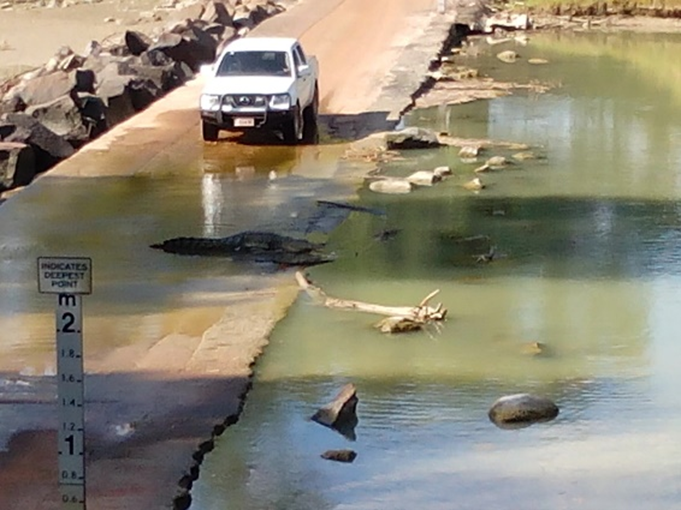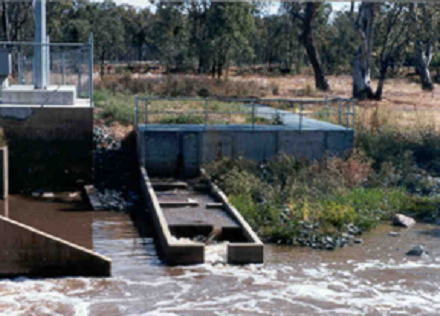MAN-MADE HAZARDS
Man-made canals
Man-made canals are designed to carry water over a specific course and at a specific rate. Designed features within the canals also create hazards for any person in the canal.
These features include:
- Low head dams
- Vertical walled channels, where due to the channel wall height it becomes impossible to climb out of the canal. Land-based rescue attempts require specific equipment and techniques.
- Trapezoidal walled channels, particularly when moss covered, make extrication from the canal difficult.
- Bridge abutments and supporting columns can act as a strainer and pin an individual to it by the force of the water.
- Breakers will sometimes be found at the base of a low head dam or even at the convergence of two water courses. The breakers are usually found as vertical concrete columns, which assist in breaking up debris in the water course.
Causeways
A causeway, by design, is a road that crosses a water course in a low-lying area. Causeways may be dry most of the time, but when water levels rise in the water course, water will flow, spill or surge over the causeway surface.
These types of crossings become increasingly dangerous as water flows across the road rises in level and speed. It takes only 15cm of fast flowing water to carry a car off the causeway.
Not all causeways are made of concrete or bitumen, some are made of compacted earth which may wash away if the current is fast enough or if the causeway is in poor condition. It should not be assumed that the causeway is safe to cross or that it is safe to be used in any rescue attempt. A visual inspection must be made prior to use. Water flow and rising water levels must also be considered.
Figure 33: Causeway

Fishways
Fishways are passageways designed to allow fish to pass artificial barriers in waterways and are present in most moving inland waterways.
Fishways are constructed with quantitative ecological and hydrological data underpinning their design, to the point where fishways can be tailored to pass whole fish communities, target species or size ranges, and/or operate over a broad range of river conditions.
While the focus has primarily been on designing appropriate fishways to encourage ecological outcomes (which are important), a gap in the available guidance is the effect of fishways on human safety where these are present in areas where human recreation occurs.
Risks present to swimmers and other recreational users are entrapment and suction related risks causing entrapment.
Figure 34: Fishway

Inlets and pipes
Many inland waterways have inlets for pipes that are used to redirect water for reasons such as irrigation, maintaining water levels and cooling of equipment. These pipes have a suction effect as the water is drawn into them. The suction and resulting current into the inlet can be enough to pull a person into the centre of it. The suction can cause injuries and increase the risk of drowning. Inlets and pipes should be designed to minimise the risk of entrapment, injury or collision.
Pumps
Pump inlets in dams and/or reservoirs are also hazardous due to the moving water in and around the pump. These pumps have potential to pin you to the intake and make it very difficult to remove yourself from danger.
